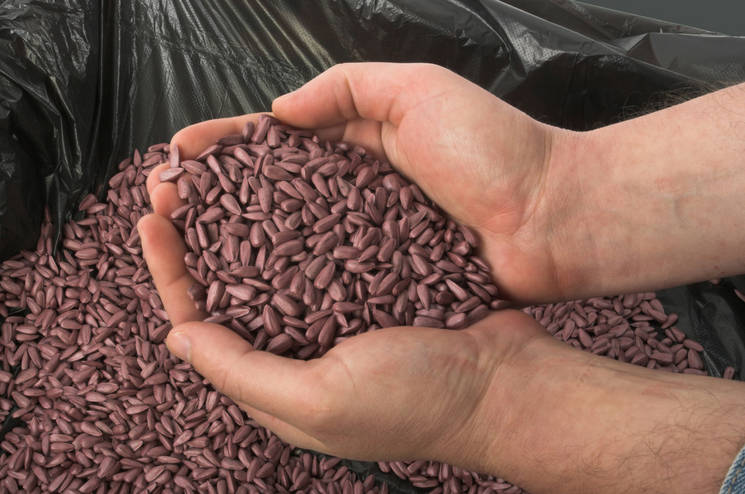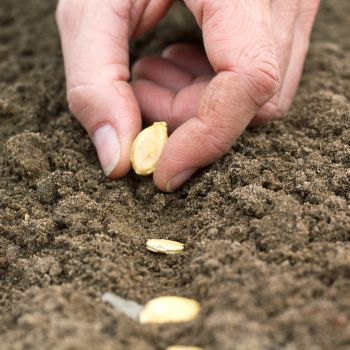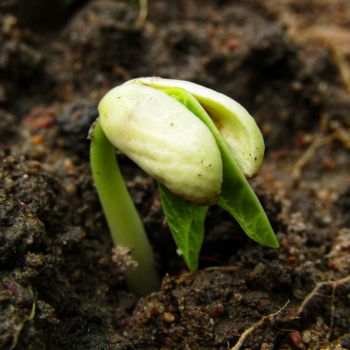Have you ever had the perfect flowers in your garden and planted the seeds from the same packet the next year to have them fail to sprout? Perhaps you've stumbled across an old packet of beans that you tossed in a spare corner of your garden, thinking they'd never sprout just to have them come up with vibrant, productive plants? The difference between these two situations is usually a very simple one: seed storage conditions. In this article, we'll discuss how to best store your seeds to retain the best possible germination rate to help make your gardening experience a success.
Though they seem like little more than bits of organic matter in your hand, we've all seen the miracle that takes place when seeds are planted in fertile, damp ground. From a child's bean plant project in early primary school through to the largest agricultural concerns in the country, the entire process starts with viable seeds that have been properly prepared and stored in the right conditions. But why are storage conditions so important to seed viability?
Seeds are a living organism. They're in a dormant state, but much like animals that go through hibernation, that doesn't mean the seeds don't have specific needs to continue to flourish. Think about a pygmy possum. If one were hibernating and the nest grew too cold or was flooded with water, the possum wouldn't be able to survive, even though its needs for warmth and oxygen are decreased while in that state. Seeds also have needs while they are in a dormant state. For the most part, this entails removing particular elements from the environment in a controlled fashion. Moisture, light, time, and heat are the three most common elements that will cause problems in the seed's germination rate.
Expected seed lifespan
But how long can you store those corn seeds from your great aunt's garden before they lose viability? If they're stored properly, it could be a great deal longer than you'd think. There are a number of seeds which, with appropriate storage, can last up to ten years. These long-lived seeds include many varieties in the nightshade family, including tomatoes and capsicum, as well as sunflowers and beans. However, other plants have a much shorter window of viability. Onion family seeds tend to have a very short lifespan, from six months to two years.
You'll also notice significant differences between varieties in a particular type of plant. Cauliflower seeds, for example, will still germinate for three to four years after harvest. However, the White Rock variety of cauliflower often loses viability after only a single year, a disappointment for gardeners who appreciate the variety's dependability, early yield, and delicious flavour. Generally speaking though, the majority of seeds will survive about three years in proper storage conditions.
But where are the outliers in seed viability over time? A couple recent archeological finds have revived species of plants that had been lost to extinction. A Canadian archeological dig discovered a jar of squash seeds that were about 800 years old. The clay vessel helped moderate humidity and kept the seeds in the dark while Canada's naturally cool climate prevented the seeds from losing viability, allowing the large squash to be grown again and revived from its extinct status. When Herod the Great's palace in Israel was excavated in the 1960's, a small clay jar of Judean date palms was discovered that was dated to 2,000 years old and had been extinct for fifteen centuries. Stored carefully for over four additional decades, a botanist decided to plant one in 2005 to see what would happen. It germinated, reviving another lost species. By comparison, some alpine species drop to a 50% germination rate within 95 days.
Preparing your seeds for storage
What did these two extinct species have in common in terms of storage? Both were buried, providing a lower temperature that conditions at the surface would provide. The clay pots they were stored in provided a naturally dry environment, preventing the seeds from sprouting prematurely. The darkness of the jar's interior prevented the seeds from trying to sprout to take advantage of photosynthesis. These are the same conditions you'll want to encourage in your seed storage activities. If you're only storing the seeds for a few months, a cupboard or drawer in your home is usually a viable option, but for longer-term storage, you'll want to take additional measures.
One other very important task to undertake is proper labeling of your stored seeds. Though it won't affect the overall seed viability, it may prevent you from providing the right storage conditions if you move the seeds into the wrong environment, believing them to be a different species or variety. During the hustle and bustle of gardening, save yourself the aggravation of leaving your seeds unlabeled. Make sure you include the main type, the variety name, and the date opened or harvested to help you determine viability down the road.
How to Store Your Seeds
To avoid any unnecessary loss in quality store your seeds in a dark, dry, cool location. A cupboard or a drawer is normally sufficient for short term storage (ie: 6 months).
If you intend to store your seeds for a longer period we recommend you store them in your fridge, this will dramatically increase the life of your seeds. Seeds should be put in an airtight container/jar together with some desiccant/silica gel (if unavailable an envelope filled with powdered milk or rice is a good alternative).
Make sure not to freeze your seeds, if done incorrectly freezing can kill seeds instantly.
When removing your seeds from the fridge allow the container to come to room temperature before opening, this avoids condensation.
Keeping cool:
One of the top two factors in extending seed viability involves controlling temperature. In the wild, fluctuating temperatures cause seeds to sprout, while constant cool temperatures allow the seeds to remain dormant, much as winter temperatures do in the wild. One way to meet the need for constant cool temperature is by storing the seeds in an air-tight container with a desiccant in the refrigerator, preferably in a larger sealed container or drawer that won't warm up every time the door is opened.
Though it may be tempting to freeze the seeds, be aware that doing this incorrectly can instantly kill plant seeds for many species.
The importance of moisture content:
Moisture content is the other major factor in stored seed viability. Seeds are designed to only sprout when they have sufficient moisture to support the seedling. That means the easiest way to prevent seeds from sprouting is by storing seeds that have been sufficiently dried and using a low-humidity environment that prevents this process from starting.
The easiest way to achieve a low-humidity environment is to store the seeds in an air-tight container with a desiccant. The desiccant can be a specific product for seed storage, a silica packet or two from a new bag, pair of shoes or medicine bottle or a bit of rice or powdered milk in a paper envelope. If you've decided to store your seeds in a refrigerator to prolong their viability, make sure they are dried sufficiently prior to being placed in the refrigerator in an air-tight container. When you remove the seeds, keep the container sealed until it has reached room temperature. If you don't, the humidity in the room air can condense on the seeds, causing earlier germination than you may intend.
Light:
Light is the last main factor that will effect the lifespan of stored seeds. When seeds are stored it is important to block out all light and store seeds in total darkness. This can easily be achieved by storing seeds in thick paper bags/envelopes or an opaque container.
The methods mentioned above apply to the majority of herb, vegetable and flower seeds, but as with all things in life, there are exceptions to the rule. Some seeds for instance actually need to be stored in damp conditions to remain viable.
Storing seeds is a great way to save money and plant household favourites in succession, but only if done correctly. By following our tips here, you'll easily be able to successfully store your seeds for a significantly longer period of time.






